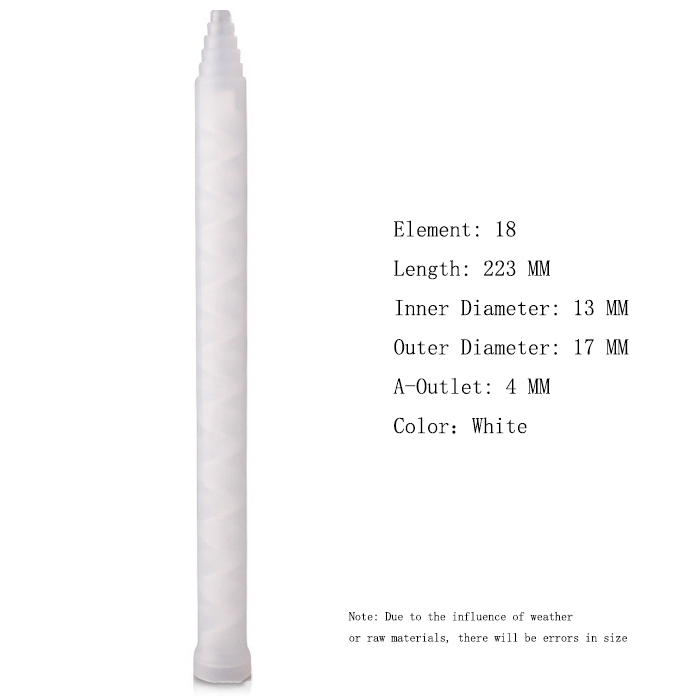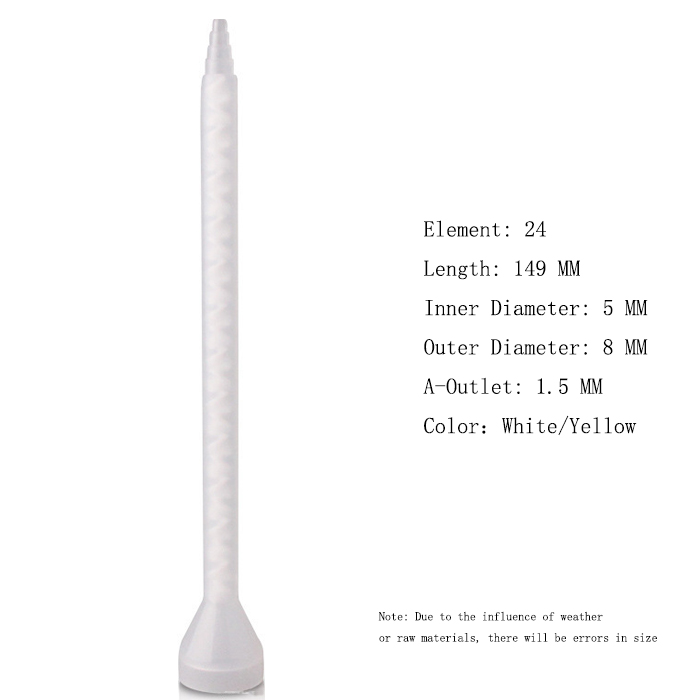When it comes to epoxy mixing nozzles, there is no one-size-fits-all answer to whether more elements are better. The ideal number of elements in a mixing nozzle depends on the specific application and the properties of the epoxy being used.



For example, if the epoxy has a short pot life (the amount of time it takes for the mixture to begin to harden), a mixing nozzle with fewer elements may be preferable. This is because the more elements in the nozzle, the more turbulence there is in the mixture, which can cause the epoxy to cure more quickly.
Similarly, if the epoxy is being used in a vertical or overhead application, a mixing nozzle with fewer elements may be better. This is because the weight of the epoxy in the nozzle can cause it to droop or sag, which can affect the mixing process. A nozzle with fewer elements can help to minimize the weight of the epoxy in the nozzle, which can improve the mixing process.
On the other hand, if the epoxy is being used in a horizontal application or in a large area, a mixing nozzle with more elements may be preferable. This is because the more elements in the nozzle, the more thorough the mixing process will be. In a large area or horizontal application, it can be difficult to mix the epoxy manually or with a nozzle with fewer elements. A nozzle with more elements can ensure that the epoxy is mixed thoroughly and evenly.
Another factor to consider when choosing an epoxy mixing nozzle is the viscosity of the epoxy. If the epoxy is highly viscous (thick), a mixing nozzle with more elements may be necessary to ensure that the resin and hardener are mixed thoroughly. This is because a thick epoxy can be more difficult to mix, and the additional turbulence created by a nozzle with more elements can help to ensure that the mixture is properly mixed.
In summary, the number of elements in an epoxy mixing nozzle should be chosen based on the specific application and the properties of the epoxy being used. While more elements can provide more thorough mixing in some cases, in other cases, fewer elements may be preferable to prevent premature curing or drooping. Ultimately, the choice of nozzle should be made with the goal of achieving a strong, durable bond that meets the requirements of the application.
